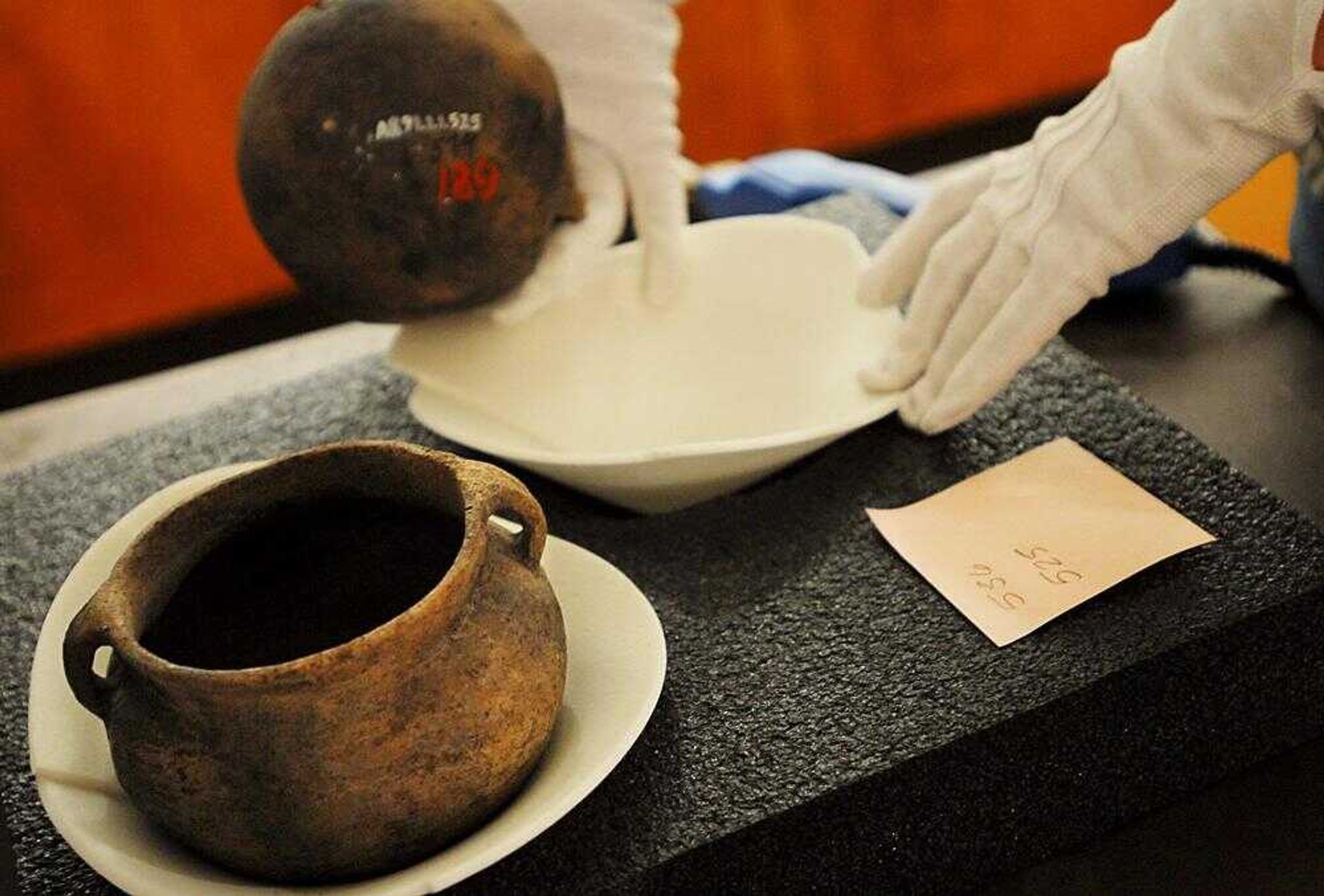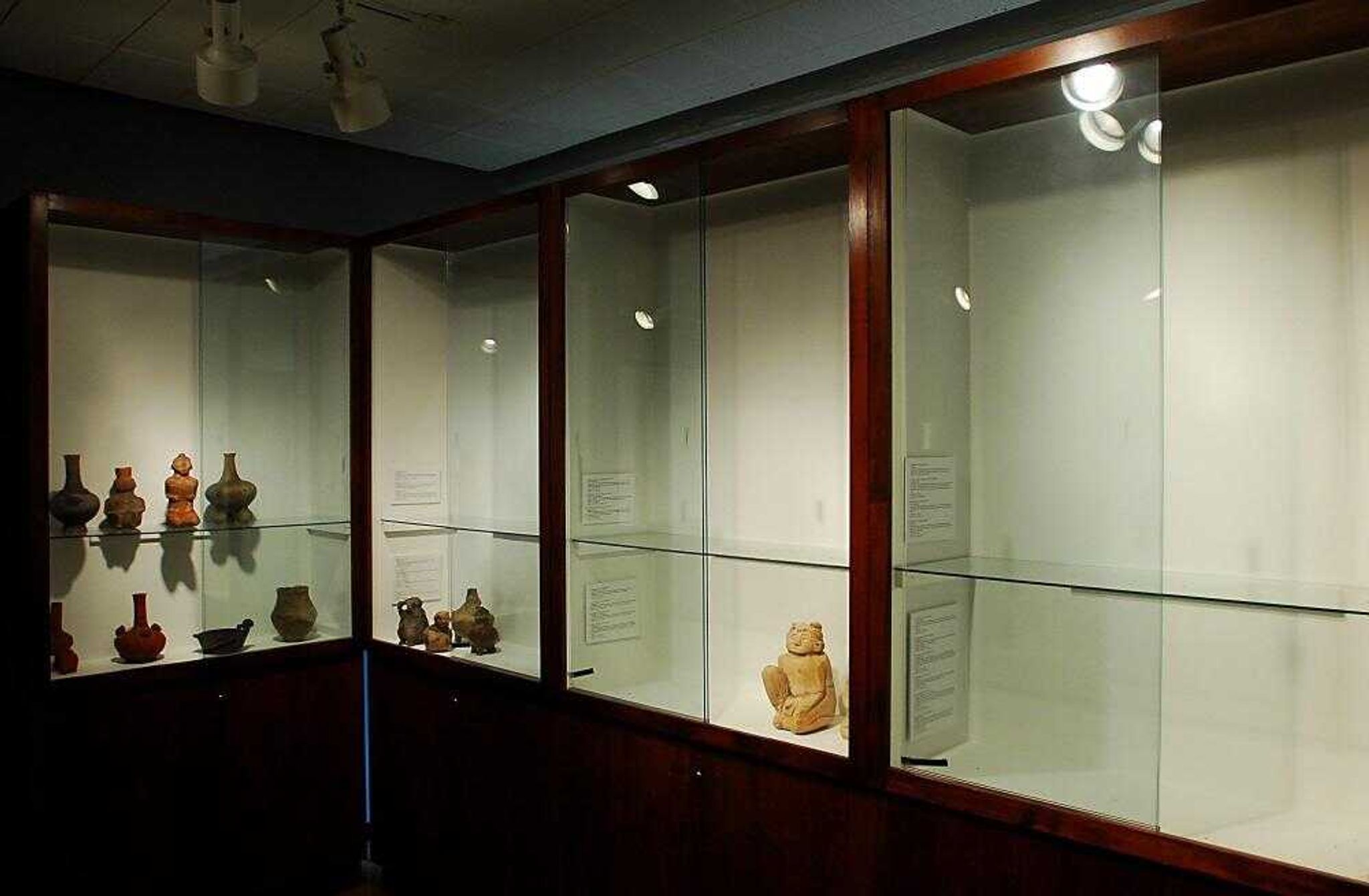Packing up: SEMO moving into River Campus
Amy Roadarmel has packed dishes for weeks. She's still not done. It takes time when you have about 900 "dishes" to pack in boxes. That's particularly the case when you're packing up Mississippian Indian clay pottery dating back some 1,000 years...
Amy Roadarmel has packed dishes for weeks. She's still not done.
It takes time when you have about 900 "dishes" to pack in boxes. That's particularly the case when you're packing up Mississippian Indian clay pottery dating back some 1,000 years.
Roadarmel is assistant curator of the Southeast Missouri Regional Museum. She's in charge of packing up the museum's Thomas Beckwith Collection of pottery as well as other museum pieces in preparation for the move to the new Southeast Missouri State University museum at the River Campus.
"I am just really busy these days," Roadarmel said Wednesday afternoon as she and two other members of the museum staff carefully packed clay bowls in foam packaging.
The museum move is just part of a larger effort by the university to move everything, from faculty members' office computers and books to pianos and art studio looms, to the River Campus, home of the new Holland School of Visual and Performing Arts.
Some of the theater, dance and music faculty already have moved into office space in a renovated, historic brick building that was once a Catholic seminary. The art department has yet to move because it will be housed in the new building that is still under construction.
The university's new campus overlooking the Mississippi River in Cape Girardeau is scheduled to open for the start of fall classes in August.
Dr. Gary Miller, a music professor and interim director of the arts school, has moved into his third-floor office even as construction continues on a new building that will house a 950-seat performance hall, a smaller theater, a dance studio, the regional museum, art studios and a banquet area.
"Most of my stuff has been down here for about 10 days," Miller said earlier this week. "I still have boxes to unpack." He and other faculty members are still awaiting installation of shelving for their offices.
Moving in is a major task when it involves the visual and performing arts departments, Miller said. The items to be moved include theatrical costumes and even the theater department's sewing machines.

The university's facilities management crews will spend much of their summer moving equipment and other items to the River Campus.
As a result, some lesser maintenance items on the main campus won't get done this summer, said Scott Meyer, director of facilities management at Southeast.
"The most important things will get done, and the lesser things are what falls off into the fall," Meyer said.
Meyer expects his crews still will be hauling items to the River Campus in early August.
But Meyer's crews won't be handling the delicate job of moving museum pieces to the River Campus and the new Rosemary Berkel and Harry L. Crisp II Southeast Missouri Regional Museum.
That will fall to the museum staff and employees of Expographiq, a Canadian firm that specializes in moving and installing museum exhibits.
Packing pottery
The museum's Roadarmel started packing the fragile pottery in April. Other staff members have joined in the task since then.
"I would say we are over halfway through," she said.
Roadarmel joined the museum staff about a year and a half ago to take charge of the packing and moving. Toward that end, she visited with staff at the Missouri Historical Society and the Mildred Lane Kemper Art Museum at Washington University, both in St. Louis, to learn how best to move Southeast's fragile pottery.
Now, Roadarmel is spending her days at a table at the east end of the museum in Memorial Hall, surrounded by packing boxes, black resilient foam, a so-called hot knife -- similar to an electric meat knife, only smaller -- and twill tape.
She slices a beveled hole sized to match the base circumference of each clay item in the 3-inch-thick foam.
"It's like slicing a turkey," she said.
Each piece of pottery is carefully packaged in foam and secured with twill tape, made from unbleached cotton. The tape is laced through the packing foam and tied atop each piece of pottery.
Museum director Dr. Stanley Grand mused that each wrapped vessel "looks like a chocolate truffle."
"I guess that means they look good," Roadarmel said as she and fellow staff members packaged clay pots in the mostly empty museum, noticeable now for its bare exhibit walls and empty glass cases.
Later this summer, the boxes of pottery will be loaded onto a truck with an air-ride suspension designed to cushion the ride. The pottery will be moved the mile and a half to the new museum.
Grand said the museum staff is doing everything it can to protect the museum's most significant collection. "Our goal is zero damage. This stuff has been around for a thousand years," he said. "We just feel a tremendous responsibility for them."
The vessels were excavated by Thomas Beckwith in the late 1800s and early 1900s from Indian mounds on his property in Southeast Missouri. Beckwith donated his collection to the university in 1913. Since 1976, the collection has been housed in the regional museum.
About 200 pieces will be displayed at the new museum, officials said. The remaining will be put into storage in the new building and will be available for scholars to view by appointment.
Permanent displays
Permanent displays have been created that depict the region's "crossroads" history from its geology to its people and its agriculture to its transportation. The displays, currently stored at the university's Malden campus, will be moved to the River Campus museum starting July 9.
That task is expected to take about a week. It then will take another three weeks to install the exhibits in the museum.
By the first week of August, museum officials said, the permanent exhibits should be in place. The 14,000-square-foot museum will have more than 5,900 square feet of exhibition space for permanent and temporary exhibits.
The new museum is scheduled to open to the public during homecoming weekend, Oct. 19 through Oct. 21.
By then, said Grand, the staff will have worked out all the bugs and made sure that everything, from portable walls for temporary exhibits to the heating and cooling systems, is functioning properly.
"We don't want to rush it and have a short-term benefit and a long-term disaster," Grand said.
mbliss@semissourian.com

335-6611, extension 123
Connect with the Southeast Missourian Newsroom:
For corrections to this story or other insights for the editor, click here. To submit a letter to the editor, click here. To learn about the Southeast Missourian’s AI Policy, click here.










